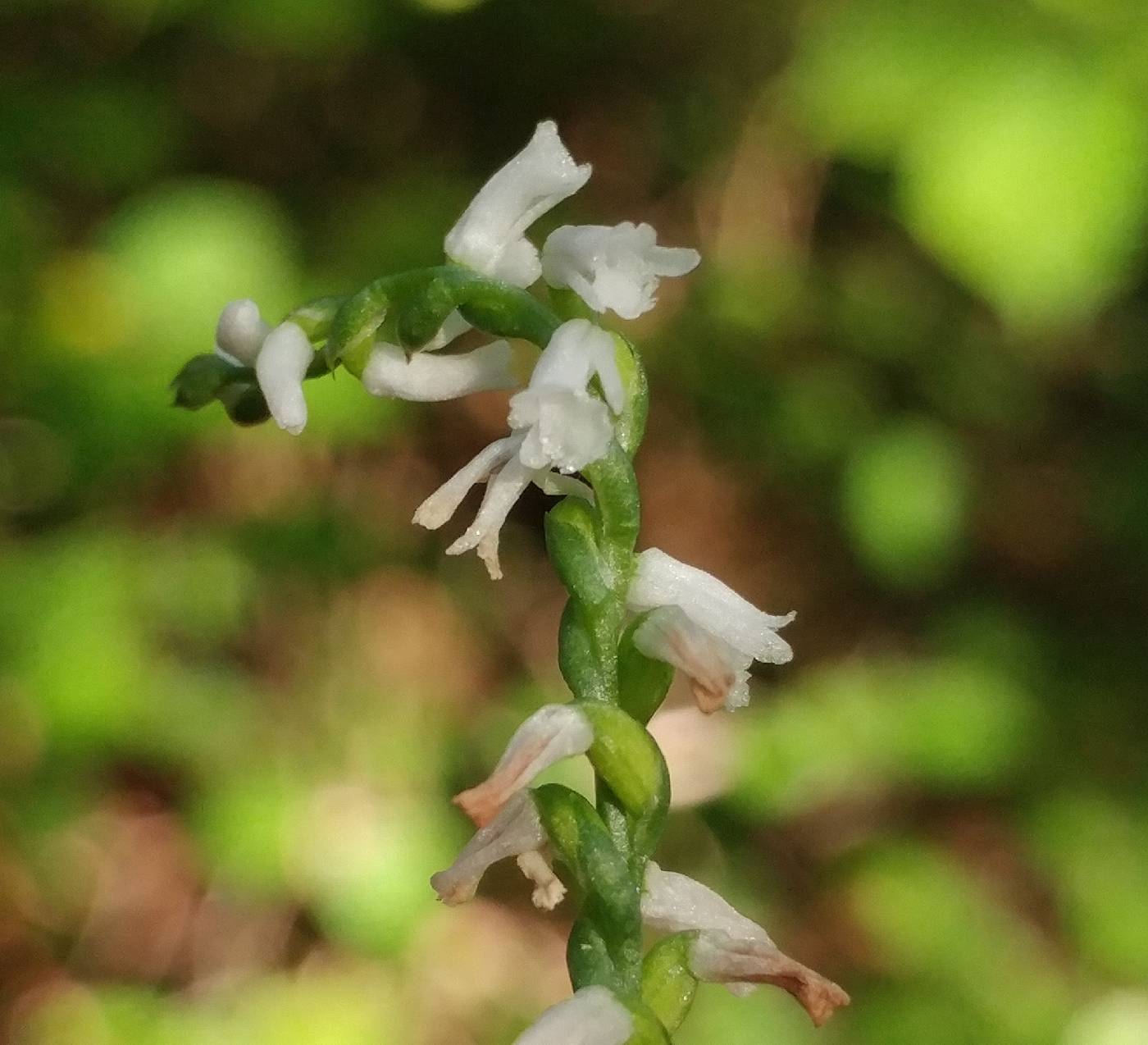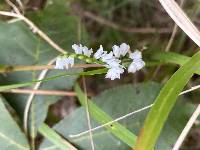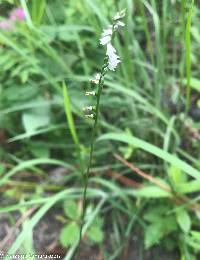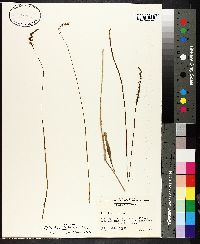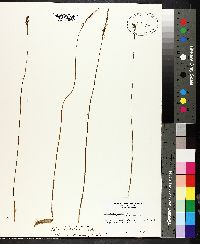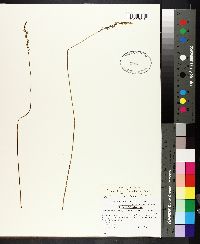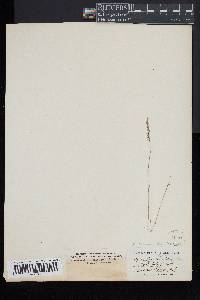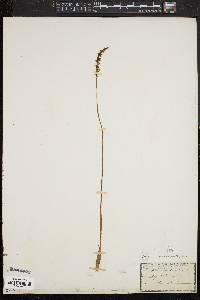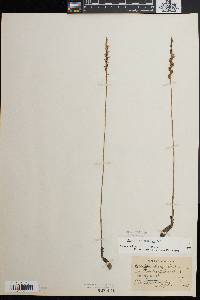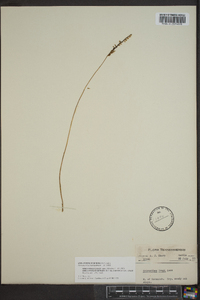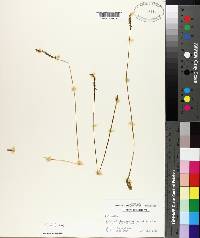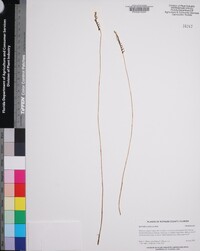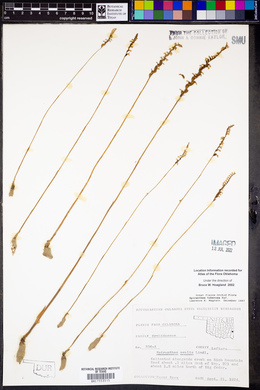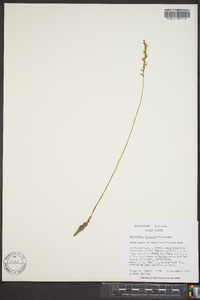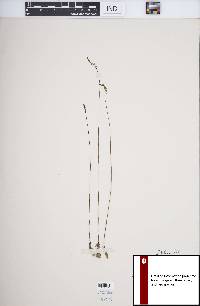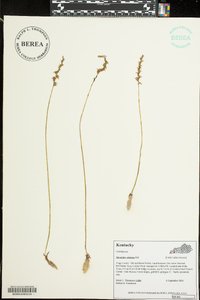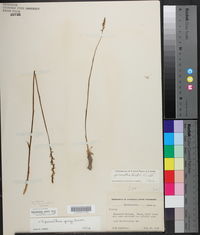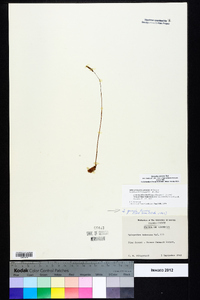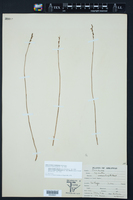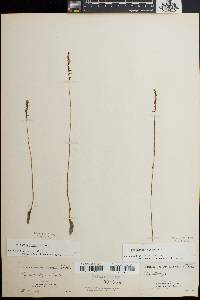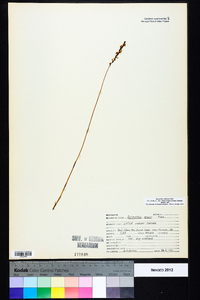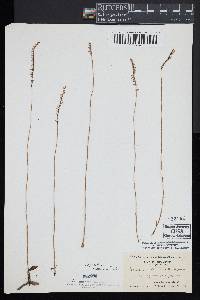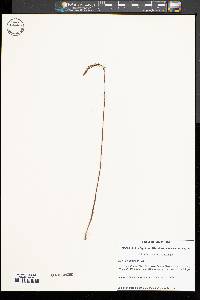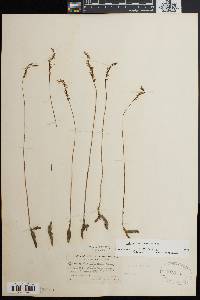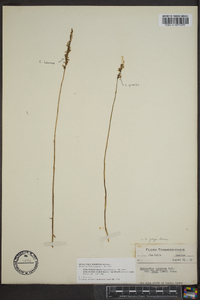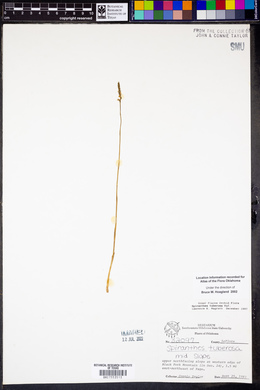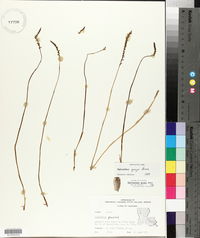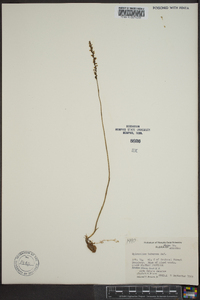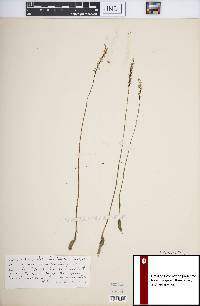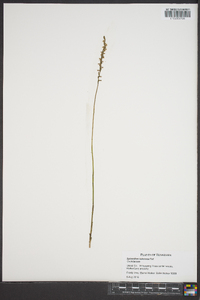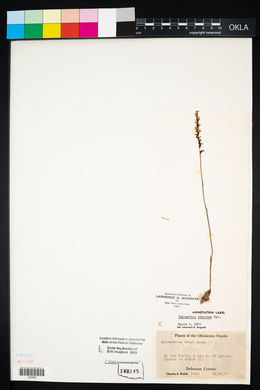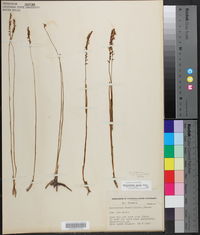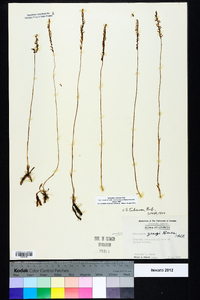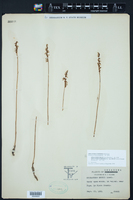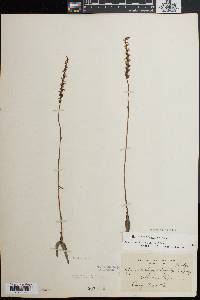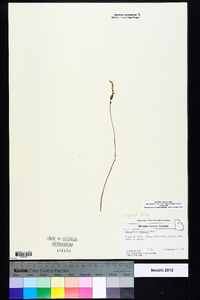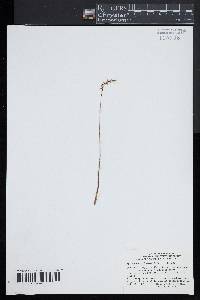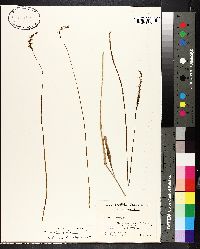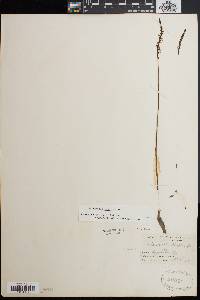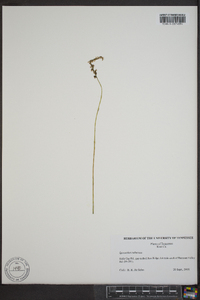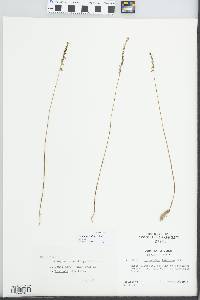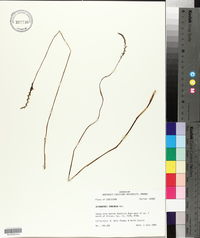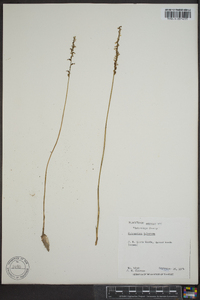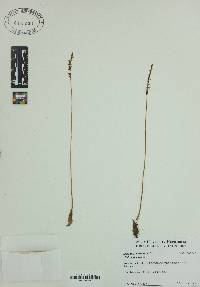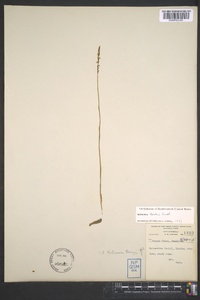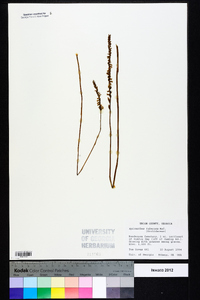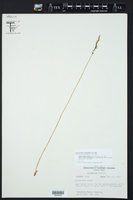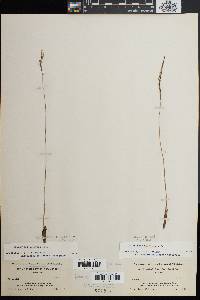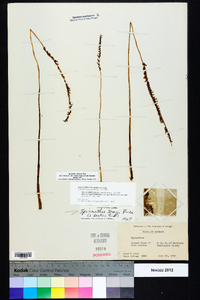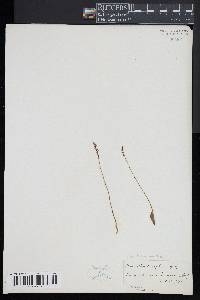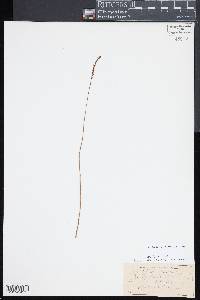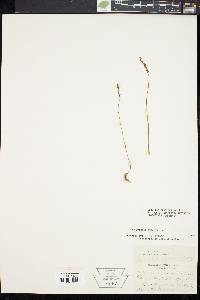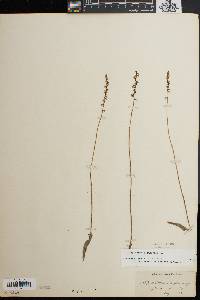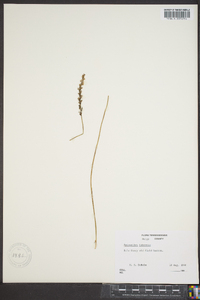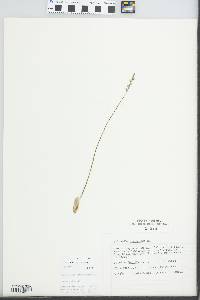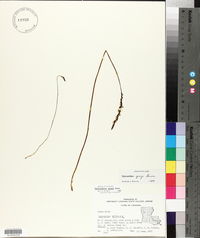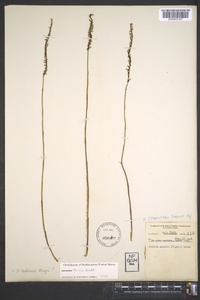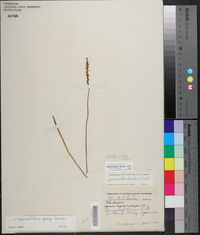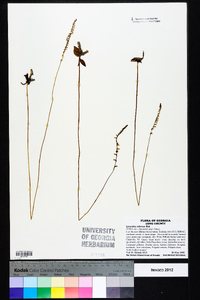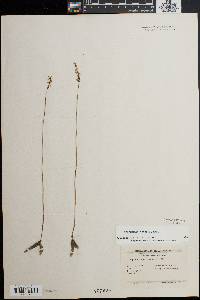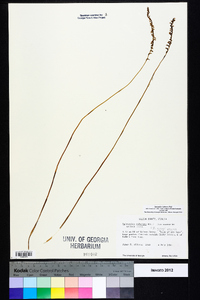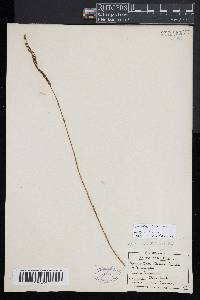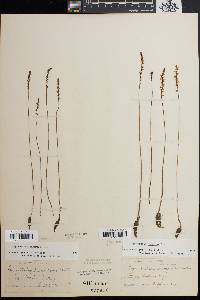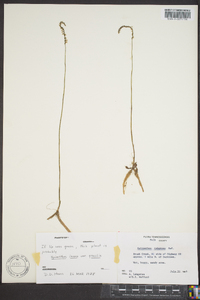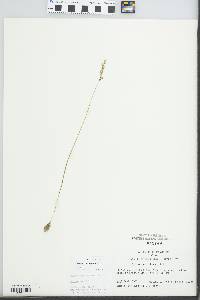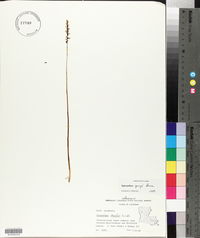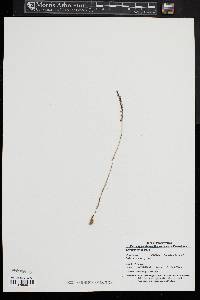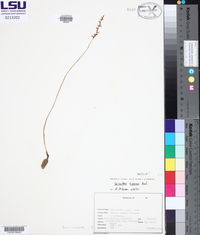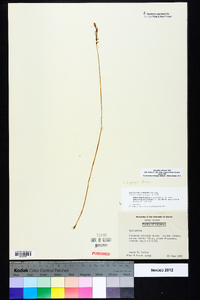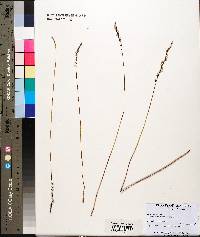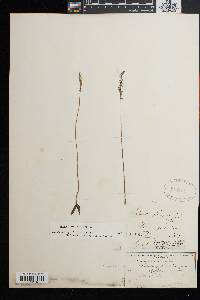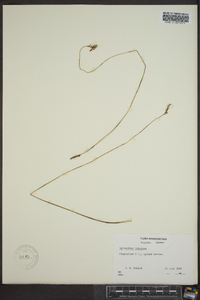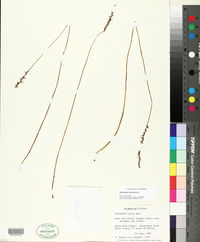Spiranthes tuberosa
|
|
|
|
Family: Orchidaceae
Little Ladies'-Tresses, more...little lady's tresses
[Spiranthes simplex] |
Plants 5-30 cm. Roots solitary, vertical, tuberous, turbinate, mostly to 1 cm diam. Leaves fugacious, 3-5, basal, spreading, oval-oblanceolate, 2-6 × 1-2 cm. Spikes loosely spiraled, 4-7 flowers per cycle of spiral; rachis glabrous. Flowers pure white, gaping from near middle, tubular portion less than 3 mm; sepals distinct to base, 5 × 1 mm; lateral sepals slightly spreading; petals linear to lance-oblong, 5 × 1 mm, apex acute to obtuse; lip 5 × 2.5 mm, ovate to oblong, apex dilated with broad crisped, finely lacerate margin; veins several, branches very short; basal calli long-pointed, mostly to 1 mm; viscidium linear-lanceolate; ovary mostly 3 mm. Seeds monoembryonic. Flowering Jun--Sep. Dry to open woods, outcrops, old fields, roadsides, cemeteries; 0--400 m; Ala., Ark., Conn., Del., D.C., Fla., Ga., Ill., Ind., Kans., Ky., La., Md., Mass., Mich., Miss., Mo., N.J., N.Y., N.C., Ohio, Okla., Pa., R.I., S.C., Tenn., Tex., Va., W.Va. The nomenclatural history of Spiranthes tuberosa is rather complex, and among the names applied to it are Spiranthes beckii Lindley and Ibidium beckii (Lindley) House. See D. S. Correll (1950) for a discussion. This species is easily recognized by its pure white flowers, broad crisped lip, and fugacious leaves.
Perennial herb 5 - 30 cm tall Stem: single, erect, green, hairless, and upwards only with sheaths. Leaves: three to five, basal, spreading, hairless, non-toothed, 2 - 6 cm long, 1 - 2 cm wide, oval to inversely lance-shaped. The leaves are ephemeral and disappear by flowering time. Inflorescence: a single, erect, terminal, elongate, loose spike of numerous, stalkless flowers forming a single, long spiral with four to seven flowers per full turn around the hairless axis. Flowers: pure white, bilaterally symmetric, well under 1 cm long (above ovary), somewhat cylindric to tubular for basal 3 mm, then sepals and petals flared beyond their middles. The reproductive parts of stamens, stigma and style are fused into a column above the 3 mm long inferior ovary. Sepals: three, petal-like, white, 3 - 5 mm long, 1 mm wide, narrowed to pointed tips, more or less forward-pointing but lateral two sepals slightly spreading beyond middle. Root: solitary, vertical, tuberous, top-shaped, up to 1 cm long, mostly to 1 cm diameter. Lateral petals: two, forward pointing with tips upward curved, closely positioned to central sepal, white, 3 - 5 mm long, about 1 mm wide, linear to lance-shaped with tapered tips. Lip petal: one, central, lowermost, curved downward, entirely white, hairless, crisped and fringed on edges, 3 - 5 mm long, about 2.5 mm wide, egg-shaped to oblong with very broad, blunt to almost rounded tip. There are a several short-branching veins along the lip, and also two, long-pointed, but short (to 1 mm), basal projections (calli). Similar species: Spiranthes tuberosa is easily recognized by its single root, entirely glabrous stem and leaves, single long spiral of flowers along the inflorescence axis, flowers with a very short tubular portion (less than 3 mm), a pure white lip, and the lack of leaves at flowering time. No other species of this genus in our area has this combination of characters. However, superficially some may possibly confuse S. lucida, but that species flowers earlier (June), its leaves are present at flowering time, at least the inflorescence axis is hairy, and the center of the lip is brilliant yellow or yellow-orange. Flowering: July and August Habitat and ecology: Very rare, only documented from Berrien Co., MI at a highway weigh station. Occurence in the Chicago region: native Notes: This species has a much more southeastern distribution and the occurrence in southern Michigan is quite disjunct from the main range. Author: The Field Museum Slender, 1.5-3 dm; root single (unique among our spp.), turbinate, to 6(-10) cm, 4-12 mm thick, sometimes accompanied by the partly decomposed root of the previous year; basal lvs ephemeral, usually ovate, short-petiolate, 2-4(-5) cm, 6-15(-20) mm wide; usually 4-6 bladeless sheaths on the stem; infl 2-8+ cm, its rachis (as well as the whole herbage) glabrous, the ±cylindric fls rather closely set in a single long spiral, 3-5.5 mm, pure white, the lip broadly ovate, distally truncate or sometimes rounded and crisped or slightly erose, puberulent with minute hairs 0.2-0.4 mm on the upper surface, minutely papillate below, the basal callosities less than 1 mm. Acid, usually rather dry soil; Mass. to Fla., w. to Ill., Mo., and Tex. Aug., Sept. (S. grayi; S. beckii, misapplied) Gleason, Henry A. & Cronquist, Arthur J. 1991. Manual of vascular plants of northeastern United States and adjacent Canada. lxxv + 910 pp. ©The New York Botanical Garden. All rights reserved. Used by permission. From Flora of Indiana (1940) by Charles C. Deam Indiana Coefficient of Conservatism: C = 3 Wetland Indicator Status: UPL |

